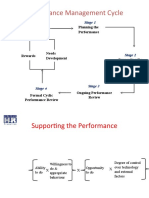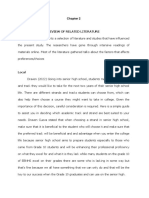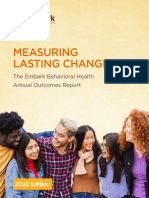0% found this document useful (0 votes)
402 views3 pagesMSPSS
This document provides information about the Multidimensional Scale of Perceived Social Support (MSPSS), including the scale items, scoring instructions, and references. It describes how to calculate mean scores for the significant other, family, and friends subscales as well as the total scale. It also discusses options for categorizing respondents' levels of perceived social support based on their scores.
Uploaded by
Tanvi ManjrekarCopyright
© © All Rights Reserved
We take content rights seriously. If you suspect this is your content, claim it here.
Available Formats
Download as PDF, TXT or read online on Scribd
0% found this document useful (0 votes)
402 views3 pagesMSPSS
This document provides information about the Multidimensional Scale of Perceived Social Support (MSPSS), including the scale items, scoring instructions, and references. It describes how to calculate mean scores for the significant other, family, and friends subscales as well as the total scale. It also discusses options for categorizing respondents' levels of perceived social support based on their scores.
Uploaded by
Tanvi ManjrekarCopyright
© © All Rights Reserved
We take content rights seriously. If you suspect this is your content, claim it here.
Available Formats
Download as PDF, TXT or read online on Scribd
/ 3






















































































































